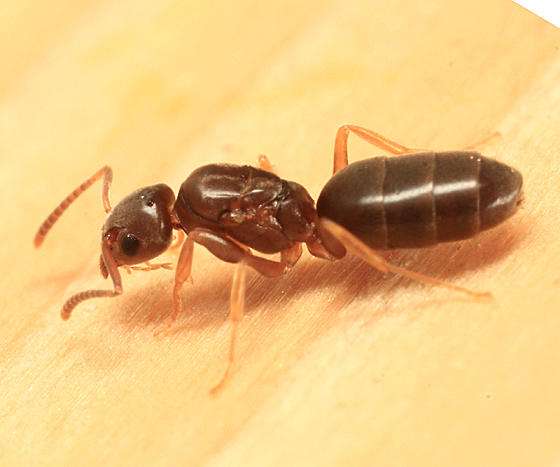
Tetraponera, sometimes known as slender ants, is a genus of ants in the Pseudomyrmecinae subfamily.
Distribution
Tetraponera species are frequently found in the tropics of Australia, Asia, and Africa. Plant species are connected to several species of animals. Acacias are the most frequent myrmecophytes for Tetraponera, although this genus also has a wide range of other hosts, such as bamboos and lianas. Tetraponera ants prune nearby plants to keep off other ants and caterpillars as well as to lessen competition for their host’s resources. Tetraponera species only abandon their myrmecophyte in order to establish a new colony on a different host; a queen and few workers stay behind to help the colony grow.
Life Cycle and Castes
Like other ants, Tetraponera reproduces exclusively through its queens, which are the sole females in a colony. All of the female sterile workers hunt for food and guard the colony. Only at specific times of the year are males created, and they disperse to mate with virgin queens from different colonies. Because ants are haplodiploid, they have control over the gender of their progeny. An unfertilized egg will develop into a male, whereas a fertilized egg will develop into a female. This consistently limits the breeding season, when the species’ winged virgin queens and males migrate The larvae from the queen’s eggs are cared for inside the colony and kept safe from any predators by the workers. All female larvae are either workers or new queens depending on the level of care they receive; all male larvae are drones. In order to ensure that there are enough workers created to guard and support the expanding colony, eggs are initially produced at a low rate when a new colony is formed. However, this rate swiftly increases in the second to fourth years.
Identification
Worker
Size and polymorphism (occasionally) of the worker vary (worker HW 0.42-2.25). Masticatory and mandibular basal borders can converge at an oblique angle but are frequently separate. The proximal tooth is typically lacking, while the basal border has 0–2 teeth. Three to six subequal-sized teeth, usually three, are present at the masticatory edge. A single, continuous, weak elevation that is substantially rounded behind the masticatory and basal margins is seen on the mandibular venter (sometimes this ridge is very reduced). All species, with the exception of T. tessmanni, have a palp formula of 6,4; (4p3.3). The distal border of the labrum occasionally has noticeable teeth or protuberances in addition to a narrow, notch-like fissure. The anterior margin of the median clypeal lobe is frequently serrated or crenulate; it has a continuous, non-truncate anteriorodorsal surface. Twelve-segmented antennas. The medial lobes of their antennal sclerites, which were quite significantly extended laterally, covered most of the antennas Queen’s basal condyles.

Queen
Similar to workers in the majority of ways; mandibles frequently changed, such as having a significantly larger apicobasal area or being basally geniculate. Frequently found, right above mandibular insertions, is the genal pit. Ocelli (3) is constantly there. More noticeable than in workers are the mid and hind basitarsal sulci. Forewing normally has two cubital cells, though occasionally only one cell is present.
Male
Mandibular basal margins are at least two-thirds the length of their masticatory margins, and they frequently converge at a rounded angle rather than a sharp apico-basal angle. The basal margin of mandibles has 0–1, very rarely 1, teeth, while the masticatory margin has 2–6, typically subequal-sized teeth. Labrum and palp ulum are workers’ terms. Clypeal lobe can occasionally be dorsomedially protuberant; anterior edge of clypeus straight to widely convex, seldom emarginate. Antennal insertions are located quite close to the posterior margin of the clypeus, and antennal sclerites frequently protrude anterodorsally over the frontal triangle (separated by less than the maximum diameter of the antennal fossa).
Table





